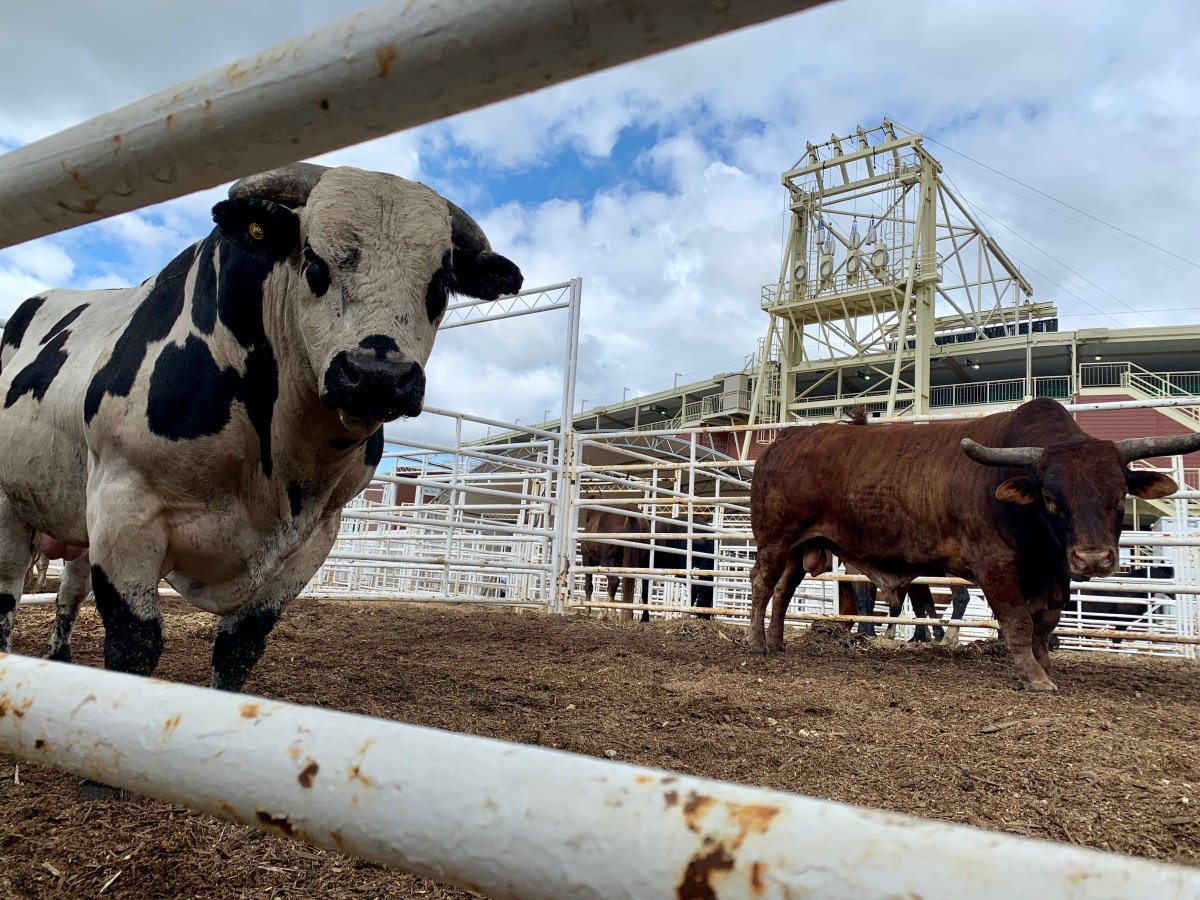Researchers at the University of Calgary are teaming up with the Stampede to try to improve how they care for bucking bulls.

The use of animals in rodeo is polarizing, but there isn’t much scientific data behind it.
Ed Pajor , an animal behaviour and welfare researcher at the University of Calgary, is hoping to change that.
“No matter what we use animals for — whether we use them for events like this, for food, for research, for companionship — we have a responsibility to make sure the animals are treated as humanely as possible,” Pajor said. “We need to have information about what that means.”
For the 10 bucking bulls and re-ride cattle, hours of preparation often come down to eight seconds.
Over the next week, veterinary students will use cameras and behavioural assessments to monitor the bulls from the moment they’re unloaded to the time they leave.
They’ll also be following bull handlers to see how they work with the animals through different chutes — in the hopes of improving conditions at the Calgary Stampede and other rodeos.
“No matter what we use animals for, whether we use them for events like this, for food, for research, for companionship, we have a responsibility to make sure the animals are treated as humanely as possible. We need to have information about what that means.”
The Stampede has made several changes as a result of similar studies over the past few years. A large tent covering a loading chute prevents animals from being distracted from people on walkways, and tour routes have been changed for similar reasons.
But animal rights activists say it isn’t enough.
Heather Anderson, a member of Calgary Animal Rights Effort (CARE), said she appreciates the researchers are trying to make things better but wants to see an end to the use of animals for rodeo.
“There’s really no way to make this comfortable for the animals,” Anderson said. “I think the time of this type of sport has got to end. We are in a more humane society than we were when it all began, and it’s time it ended.”
The Stampede says injuries to the bucking bulls are rare. It also employs an on-site auditor that has the power to make immediate changes in the name of animal safety.
It was not able to provide injury numbers from last year’s event.
“Without the health and safety of the animals, we wouldn’t have a rodeo. We wouldn’t have chuckwagon races,” communications manager Kristina Barnes said. “Priority No. 1, for all of us, is the safety of these animals. That’s what the competitors and owners want too.”
The researchers will make recommendations to the Stampede by the end of the summer.
The controversy over the use of animals in rodeo is sure to continue much longer.





Comments